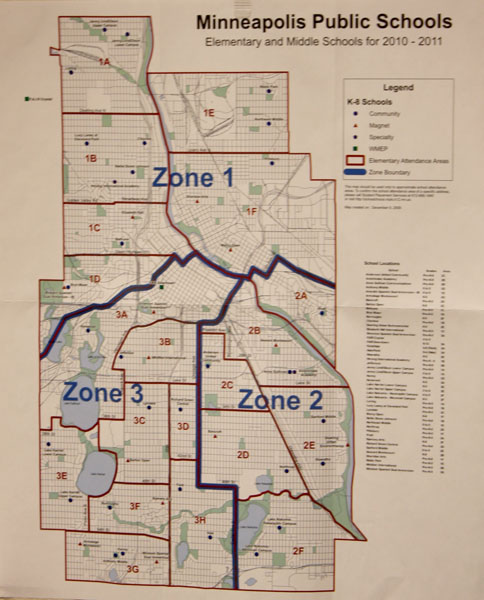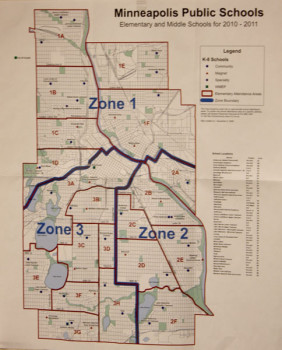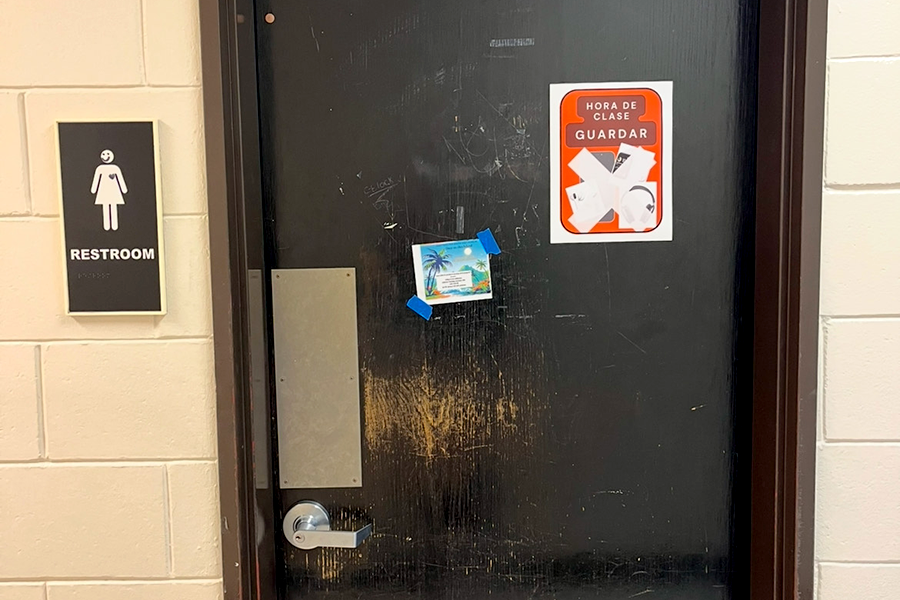
Last year, the Minneapolis School Board passed the Changing School Options plan, a dramatic proposal that will save nearly 7.5 million dollars in operating costs each year. Many students and parents worried, however, that the plan, which encourages students to attend community schools, would have an adverse affect on diversity and will polarize school demographics in neighborhoods that are already essentially segregated.
The Changing Schools Options (CSO) plan conserves resources by dividing the district into three zones. Incoming freshmen have a choice between attending the community high school in their zone or choosing from a shrinking number of magnet programs citywide. While students are strongly encouraged to attend their neighborhood school, they can make a request to attend a school outside their zone, and if that is denied they can appeal.
Short term, many students are having trouble adjusting to the fact that they have less choice in deciding their future school. But on a longer timeline, many critics of the plan are worried about how it will affect the diversity of schools.
“The challenge is our city is so segregated,” said Courtney Cushing-Kiernat, the project manager for the implementation of CSO. “In the past they’ve tried to combat that by busing and driving people all over.” With district-wide busing cuts, this approach may no longer be possible. Dealing with segregation may be a challenge but “the goal is to try to partner… communities together to try to help with the integration,” said Cushing-Kiernat.
The School Board was wary of this segregation when they drafted the plan, said Cushing- Kiernat, and they did take steps to prevent it. Some of the original zone boundaries were changed and magnets were kept open in several schools in order to keep the schools more diverse. According to Chris Stewart, clerk of the Board of Education, students from any zone are allowed to attend North High, which may help combat possible segregation.
“It’s a challenge, it’s definitely a challenge,” said Cushing-Kiernat in regards to preventing segregation.
With school boundaries changing, increased homogeneity may be inevitable, but “It’s going to take a while before we know what the full affects are,” Stewart said.
Diversity has always been one of South’s biggest assets, and principal Cecilia Saddler doesn’t think that is going to change because of the CSO. “South is still lucky enough to be well located,” she said. With easy access to the light rail, several bus routes, and the Greenway, commuting to the school on public transportation or bikes is still a very real option. In addition, the South Open program is still a magnet, and can accept applicants from different zones. All in all, “[South] probably still has one of the most diverse populations,” said Saddler.
Many people are concerned with this change in policy, and are worried about getting into their preferred school. It has been hard for all involved, and as Kiernat put it: “Before the school year started, there was lots of angst”, but school and district officials are trying their best to cope. “What we’re trying to do is live with the CSO,” said Saddler.







